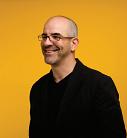Simon Chadwick
Published in Research World March/April 2011
Simon Chadwick talks to Anthony Pannozzo, Managing Principal of Research Communities at Continuum.
Tell us about Continuum and its work on emerging markets.
Continuum is a global innovation consultancy. We focus on design innovation and our goal is to drive business results through creating meaningful design experiences. We are headquartered in Boston and Los Angeles and have studios in Seoul, Shanghai and Milan. We have an eclectic group of practitioners, ranging from anthropologists and sociologists to mechanical and systems engineers, and approach design from all aspects, working with people with backgrounds in business, digital and product backgrounds to focusing on services, interactions and organisations.
We help clients achieve their growth objectives, and emerging markets are on the forefront of everyone’s conversation because that’s where investment is being funneled, where the population is growing and is the youngest. A lot of multinationals, as well as companies based within these markets, are placing heavy bets on the future of emerging markets to drive their growth.
In a recent talk at Northwestern University you said that the emergence of these markets will change the world economy. Why is this so important?
There are six and a half billion people in the world now and at some point in the next 30 years, for the first time ever, the world population will begin to decrease. Where population is growing is in emerging markets. Whereas there have always been more people there than in developed markets, as investment is made in emerging markets, and the speed and access to information increases dramatically, many people in these countries are emerging from poverty at a rate that has never before been seen. We’re seeing a shift in the population curve, which is a bell curve that has a fat middle, which is middle class, and fringes and tails with the very rich and very poor. That bell curve is moving right on the axis: you have a disproportionate number of people leaving poverty and entering the middle class.
The middle class has largely driven the economy in developed nations since the first boom driven by the industrial revolution. So now millions of people who were previously poor are enjoying standards of living they have never enjoyed before. And once they are at a point where they can maintain basic needs, they start to think about the world in a broader way, achieving their aspirations, buying their first car, sending their children to college, and purchasing the kinds of goods and services we take for granted.
Consumers in the US followed a path of each generation doing better than the previous one. That model of the American dream has in many ways been distributed throughout the world. We’re carrying a lot of debt and are probably not going to be able to spend to the degree we have in the last 30 years. So that consumption, which essentially drives the economy, is going to happen outside the US.
I think you said that 93% of the world’s middle class would be in emerging markets by 2030?
That’s a World Bank statistic. We’re adding about seventy million people a year to the ranks of the middle class world-wide, the equivalent of adding France every year. I read recently that within the next decade Paris will no longer be in the world’s top 25 cities in terms of population, which is shocking. But that just shows you how much of a euro- and western-centric view many of us have.
Many business leaders, designers, innovators, engineers and technologists are about to enter these markets, but cannot rely on their native domain and gut instinct and ability to inform their decision-making because they have no understanding of what daily life is like in India or in China. So part of our focus is to help leaders understand how they can be successful there. Some will start – GE and Microsoft and lots of companies have opened development centres in India, China and Brazil – but during that transition leaders still operate from a far-away vantage point.
And you can’t necessarily market to the new middle class in these regions with the presumptions of the developed world behind you.
It’s the same principle that got marketers out of their offices and into the field 25 years ago. The fundamental approach is understanding how people behave, what their lives are like and what they’re trying to do, whether it’s functional or emotional. If you don’t understand that you run a high risk of spending a lot of time and money introducing a service or a product under the assumption that it works in your market, and if you reduce the cost you can sell it elsewhere, and as long as you’re in the sweet spot of what they can afford you’ll make it up on volume. That presumes that what these people want is similar to what they want in the markets that you’re currently successful in.
What tools do you use to get deep into the lives of people?
I think we’re at a point, especially in the marketing and consumer insights space, where we’re starting to hone and become really efficient with standard tools that we’ve been using for some time. I know there’s a lot of debate about focus groups versus the in-home, direct observation, ethnographic approach, and I think they both have their strengths and weaknesses. Certainly when your knowledge gaps are high and you’re entering an important market, an in-home is going to give you the deepest insight. So we go into mums’ homes and interview them and get tours of their spaces, but also follow them around as they go about their day. Through observation and the ability to have conversations we are able to develop a rapport and see something that we couldn’t have if we were asking questions or conducting a survey.
We have people in our organisation who are native Mandarin speakers but we’re always looking for that person who also really understands the culture, so we partner with what we call cultural translators. We may see something and think it’s a big insight and they might say ‘that’s not a big deal, we’ve seen that many times, and there’s this company that does this’. So what we think might be an opportunity actually isn’t.
Continuum uses research as a means to an end, which is to come up with the right idea for our clients. We never present an insight without having an implication or laddering that up to an idea that we feel our client can act upon. We need to envision what the implication of that insight might be, and sketch out what the vision of their business might look like if they act on it. That’s how we communicate what we think they should do and help them communicate it throughout their organisation so it gets a lot of momentum.
I’ve seen a single insight picked up by competitors within weeks, especially in China, which makes decision making even more difficult. It’s very hard to position around an insight when it can be knocked off that quickly.
How do we define emerging markets? Is it Brazil/India/China or are we including African and Latin American countries?
Emerging markets is essentially an economic definition based on GDP and UN statistics such as quality of life indices and purchase power parity. Our clients are trying to grow their businesses, so they speak in economic terms. We also see a grey scale; Shanghai is a fully-fledged world financial powerhouse which you would never consider as emerging. But take a two-hour train ride and you will see a very different China. So we look at it also in terms of a region’s ability to start or sustain an economy. We have a social innovation practice that works with communities to focus on base-of-the-pyramid initiatives to enable human capital to create an economically sustainable system. For us it spans the spectrum from middle-class consumers to people who are trying to figure out how to make sure their kids survive past infancy and have a better life.
There’s a wave of people joining the middle class and there are billions being left behind. Many multinationals have a business in the US, Shanghai or Sao Paulo, but not outside. That’s four and a half billion people who are not being served.
There’s a growing sense that we’ve tolerated the idea of rich and poor but that imbalance is becoming more unacceptable, especially to a generation of young people who have grown up with everything. I think we’re going to see a huge effort towards finding ways to make models work in parts of the world where people have been ignored.
If we look at APAC, Eastern Europe and Latin America, which do you think is most promising for marketers?
As China grows, many of the countries that are part of that economic zone are going to benefit. India is another huge growth opportunity because of the language, which creates a cultural affinity with western companies, as well as the connection between Indian labor capability and talent. So Asia Pacific is probably the leading cluster of emerging markets. We’re very interested in Brazil, a powerful country but speaking Portuguese, whereas English, Spanish and Mandarin are the three dominant languages. So Brazil and South America will be major players, but I think the twenty-first century will be Asian.
What recommendations do you have for insight providers in emerging markets?
I would say the single biggest thing is that if you’re working with colleagues who are based in China, Indonesia or India, and they tell you something you don’t believe, that just doesn’t seem right, it probably is. There is a world and a lifestyle that you just do not connect with.
A woman goes to the same local store every day and you’ll ask ‘are you getting special discounts or special treatment?’ And she’ll say ‘no, not really, the people are friendly and it’s convenient’. Then you’ll walk with her to that store and you’ll pass three or four others that were closer to her house. And when you observe her in her store, she’ll ask for a couple of items, he’ll bring them out, she’ll wave her hand and he’ll nod and then she’ll walk away. And you’ll notice she didn’t pay for anything. She doesn’t see that as a special service but as a sign of respect, that they know who she is and that she doesn’t have the money today, but she’ll have it tomorrow. That sense of respect and trust has almost disappeared from US retail.
That is one example of an observation and insight that a lot of people had a difficult time believing was true. But when you listen to the people who are there, you trust them. So we need to have tremendous trust in our colleagues in these markets. They know more than we do and any company, any person who feels like they know more than their colleagues in the area is probably making a big mistake.
Listen to the audiocast here: Simon Chadwick talks to Anthony Pannozzo.
Anthony Pannozzo is Managing Principal of Research Communities at Continuum.



